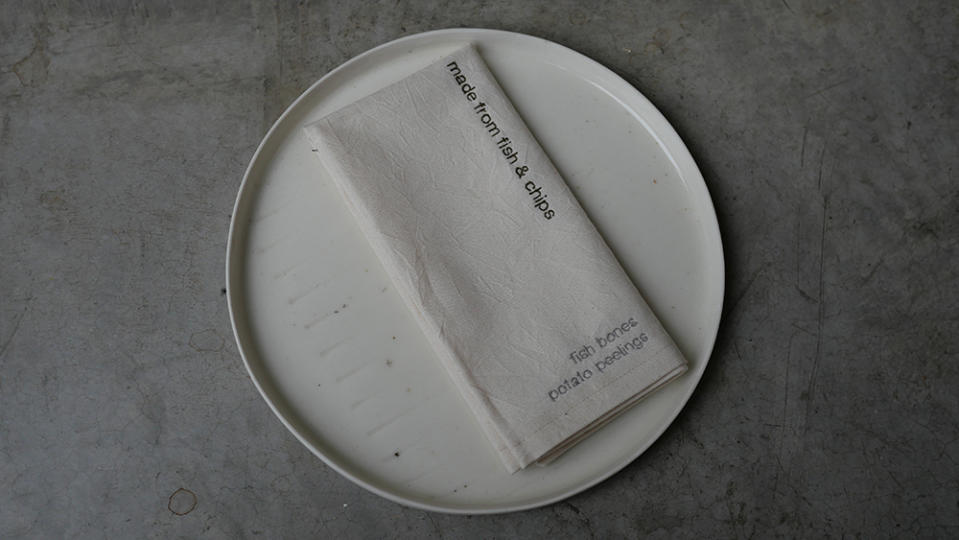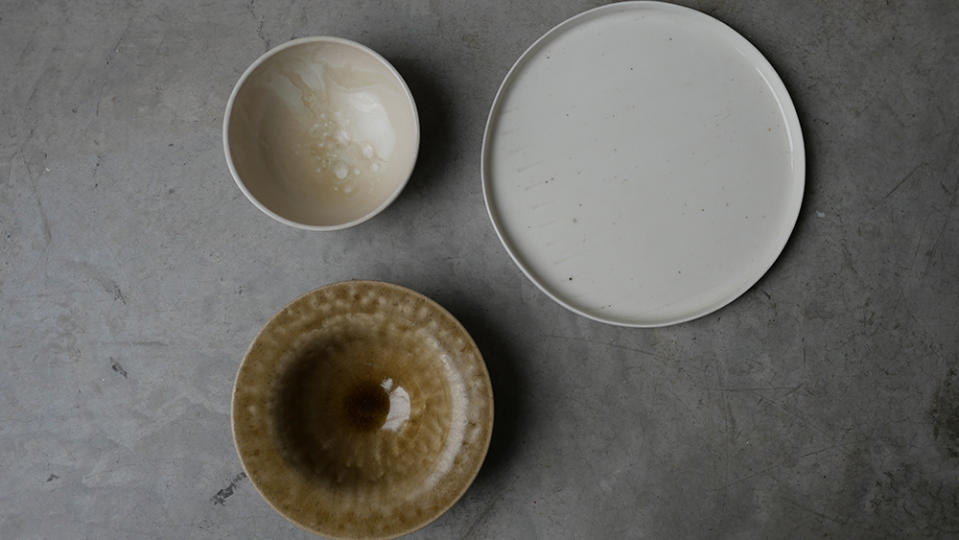A Ceramics Artist Transformed Seafood Scraps From a UK Restaurant Into Stylish Plates and Bowls

Restaurants are notorious for the amount of food waste they create. One ceramics designer is hoping to change that, though.
The London-based Carly Breame created a recent collection titled “Off the Menu,” which consists of ceramics made from a local restaurant’s food scraps. Fish bones, fruit peels and oyster shells all feature in the crockery, which is intended to be used as servingware in the same restaurant.
More from Robb Report
Tom Ford's New Watch Is Made Entirely From Reclaimed Ocean Plastic
NYC's Noz Market Will Reopen in October With a New Sushi Counter Experience
After Nearly 40 Years, Danny Meyer Is Stepping Down as CEO of His New York Dining Empire
“As a maker, I develop functional ceramic works that center around the dining table, acting as a representation of the local environment,” Breame told Dezeen. “The ambition and motivation is often how to reconsider the materials we use and work towards circular economy goals.”

Carly Breame
Incorporating food waste from Angela’s of Margate, a small seafood restaurant, Breame’s collection is inspired by the natural flow of a menu. Seafood and Wine, the starter dish, has a body made from oyster, mussel and scallop shells, with glazing created from crushed wine bottles. Fish and Chips, the main plate, uses fish-bone ash in the clay body and potato peelings in the glazing. The Fruit Salad dessert bowl has orange peels, banana peels and mint stalks in its glazing, while a cup features coffee husks and charcoal ash.
By kiln-firing and then grounding up the various components, Breame is able to use the scraps in place of traditional clay and glaze materials. “A single ceramic plate can have ten ingredients, all providing something different,” she told Dezeen. “For the fishbone china, I replaced the bone ash with fish bones due to the properties being the same. Whereas the glaze, I managed to replace all the ingredients for the Seafood and Wine, as some of the ingredients covered two or more properties.”

Carly Breame
Of course, figuring out how to use these nontraditional materials required some testing, which Breame called the “most rewarding” part of the process. To create the finished products, fish bones were boiled to get rid of excess flesh, calcined in a kiln and then ground with a mortar and pestle. The potatoes, meanwhile, were fired at a low temperature and then crushed into a powder.
Breame’s “Off the Menu” collection is set to be used at Angela’s as well as its sister restaurant, Dory’s. And Breame is considering sharing her process with others, so that more and more restaurants can stock up on environmentally friendly dinnerware.
Food scraps might not make for the most delicious meal, but they could contribute to a far more sustainable one.
Best of Robb Report
The Ultimate Guide to Wagyu Beef, the World's Most Luxurious Steak
Why a Heritage Turkey Is the Best Thanksgiving Bird—and How to Get One
The 10 Best Wines to Pair With Steak, From Cabernet to Malbec
Sign up for Robb Report's Newsletter. For the latest news, follow us on Facebook, Twitter, and Instagram.

 Yahoo Finance
Yahoo Finance 